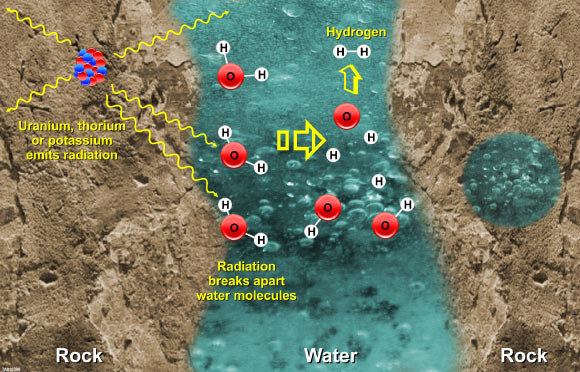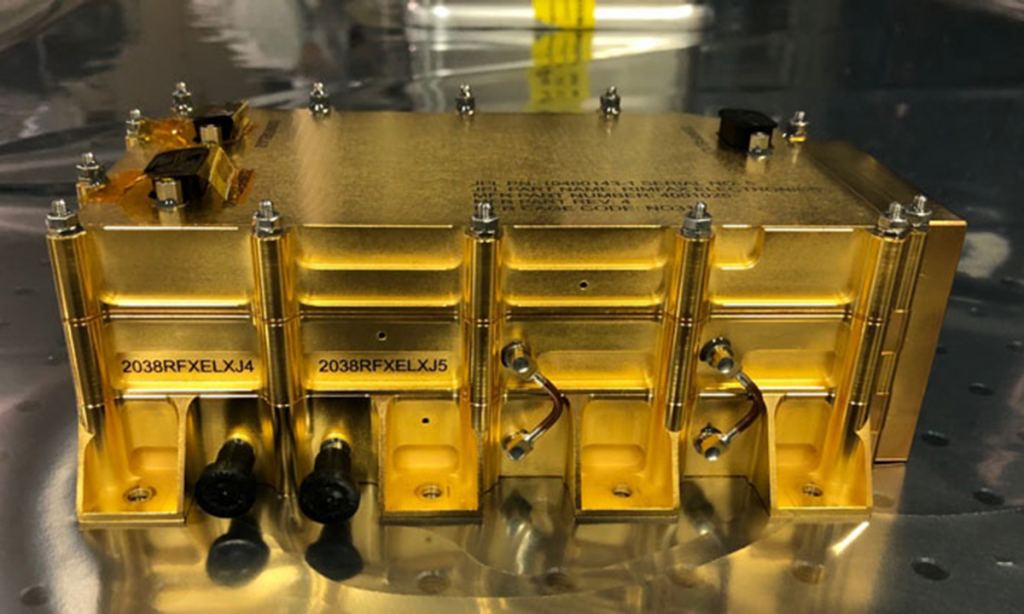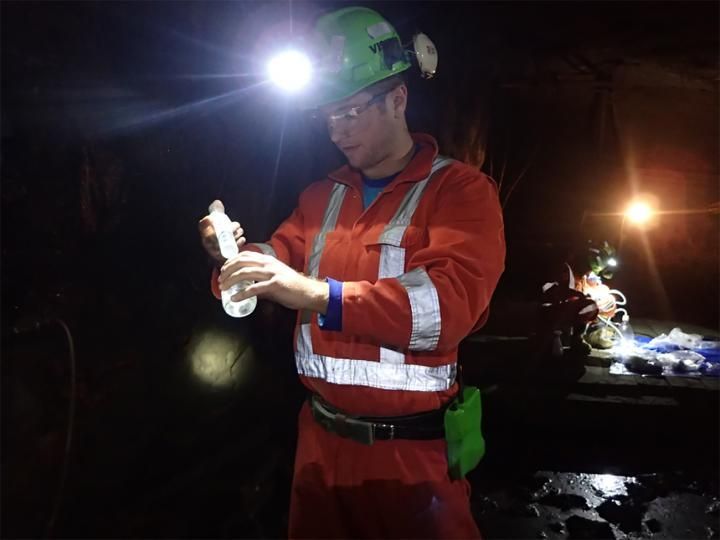According to the immortal words of Ian Malcom (Jeff Goldblum) “Life..uh…finds a way”. Back in 2005, an article in Nature used the famous quote from Jurassic Park to describe the possibility of life surviving on Mars. It encapsulates the hope that life’s adaptability, which it has proved itself so many times over on Earth, could hold true on other planets as well. Now a new paper in Astrobiology shows that there might very well be a place where life can sustain itself on the red planet – right underneath the surface.
One thing that all life needs is an energy source. Typically, on Earth, that energy source is the sun. However, there are instances where life utilizes other energy sources, such as hydrothermal vents deep in the ocean. In fact, such environments are also thought to have existed on Mars in the past. The team behind the new paper, led by Jesse Tarnas, then a PhD student at Brown, found a slightly different non-solar energy source on Mars.
Water is a key ingredient to many chemical processes. Some of those processes release energy when they occur. Radiolysis occurs when rocks break apart water that is trapped in their porous structure and then bombarded with radiation from the decay of radioactive isotopes in the rock formation. The broken water molecules release elemental oxygen and hydrogen.
Each of those constituent molecules plays an important role in the biological process that sustains some types of microbes. The hydrogen is absorbed back into the water directly while the oxygen can react with other materials, such as pyrite (fool’s gold) to form a type of material known as sulfates. Bacteria have been found in isolated parts of the Earth’s subsurface that eat the dissolved hydrogen in the water and then use the sulfates the oxygen formed to burn away the hydrogen and produce the energy necessary to life. Entire colonies of these sulfate-burning bacteria have been found living a kilometer underground with no energy source other than the radiolysis process.

Credit: NASA / JPL-Caltech / SETI Institute
Dr. Tarnas’ team was interested in whether the materials needed to support that radiolysis process would be present in the Martian subsurface. Three of the main ingredients they were looking for were radioactive elements such as thorium or potassium, sulfides that could be converted into sulfate with the addition of oxygen, and porous rocks that could trap the water for long enough for the radiolysis process to take effect.
To find these ingredients, the team took a look at the most convenient sources – Martian meteorites. They found that all three of the key ingredients for a radiolysis ecosystem were present in enough quantities in the meteorites they studied to support a bacterial colony similar to those found on the Earth.

Credit: NASA / JPL – Caltech
This isn’t the first time the Brown team took a look at this question. Back in 2018 they instead analyzed gamma ray spectroscopy data from Odyssey and came to a similar conclusion about the potential for life to spring up in Mars’ subsurface. Nor is the team at Brown the only one to search out this process off of Earth. Other teams have explored the potential for the process on ocean worlds.
Simply because the environmental conditions are right does not mean that a bacterial colony actually exists. So far there has been no conclusive evidence for the existence of life on Mars. But that doesn’t stop scientists from looking. With the addition of this new research, there is now a stronger case for a mission specifically to look for life underground on the red planet. If a mission is launched, and life is eventually found there, then Mr. Goldblum’s famous quote will take on a whole new meaning.
Learn More:
Brown – Mars has right ingredients for present-day microbial life beneath its surface, study finds
Astrobiology – Earth-like Habitable Environments in the Subsurface of Mars
Mining.com – Meteorites give clues of possible existence of present-day microbial life on Mars
UT – You’re Going to Need a Bigger Drill. The Best Place for Life on Mars is Deep, Deep Underground
Lead Image:
Jesse Tarnas, the lead author on the paper, collecting samples in a mine shaft that could prove similar in environment to the subsurface of Mars.
Credit: Jesse Tarnas

